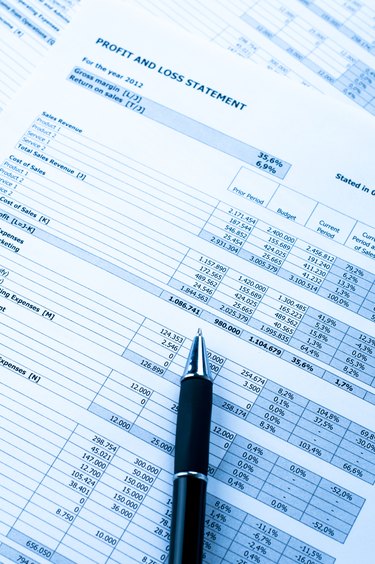
Net tangible assets can be a useful tool for analysis, because it allows you to exclude difficult-to-value or obsolete intangible assets from analyses using total assets in various calculations. For example, return on assets is a widely used financial metric used to compare the combined effects of profit margins and asset utilization. If a company has intangible assets on its balance sheet such as capitalized costs and goodwill, this overstates the value of assets and, therefore understates return on assets. By using only tangible assets, you ensure that any financial benchmark or other type of analysis is consistently applied.
Intangible Assets
Video of the Day
Intangible assets are non-monetary assets lacking in physical characteristics and that are unidentifiable outside of a legal or contractual framework. Examples of intangible assets include trade names, intellectual property, software, customer relationships and beneficial leases. They are not required to be reported on the balance sheet, except under certain circumstances, such as when a company purchases another company. When an acquisition occurs, the newly combined balance sheet must contain all tangible and intangible assets at their fair market values. Smaller companies often have intangible assets on their balance sheets that are unrelated to intellectual property. Smaller companies are more likely to have obsolete capitalized costs, which are costs that were not expensed when they occurred, and instead were converted into assets on the balance sheet.
Video of the Day
Calculating Net Tangible Assets
Net tangible assets, which is also referred to as net tangible book value, is calculated by subtracting intangible assets and liabilities from total assets. These items can be found on the balance sheet, which is a financial statement that summarizes a company's financial position as of a given time, usually the end of a fiscal year or quarter. The balance sheet is formatted so that total assets are equal to total liabilities plus shareholders' equity. Assets are categorized as current assets, fixed assets and other assets. Intangible assets are typically reported within other assets. The notes to the financial statements should contain any information regarding intangible assets. If total assets equal $100, intangible assets equal $20 and total liabilities equal $30, net tangible value equals $100 minus ($20 plus $30), or $100 minus $50, which results in a net tangible value of $50.
Net Tangible Assets Per Share
Net tangible assets per share is calculate by dividing net tangible assets by the number of common shares the company has issued and outstanding. Shares outstanding are typically found in audited financial statements as a notation in the shareholders' equity section of the balance sheet, and also within the notes accompanying the financial statements. If this information is unavailable, you may need to contact the company to get it. If net tangible assets equals $50, and the company has 25 common shares issued and outstanding, net tangible assets per share is equal to $50 divided by 25 shares, or $2 per share.
Benefits of Using Net Tangible Assets
The usefulness of net tangible assets can vary widely across industries. Companies such as software developers and medical device manufacturers often have intangible assets which are far more valuable than their tangible assets. Conversely, companies such as real estate holding companies and community banks often have little to no intangible value, and hold almost exclusively tangible assets. Valuing companies often involves obtaining a price-to-book value multiple from peer companies, and applying it to the subject company. If the subject company is a private company, price-to-book value multiples are obtained from publicly traded companies in the same business. These companies often have various intangible assets on their balance sheets, such as development and organization costs, which do not impact operations. In these cases, using net tangible book value in the valuation multiple is far more meaningful.